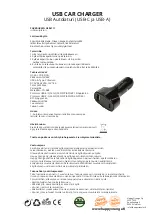
efficiently, which may increase
your stopping distance.
Driving Across Slopes
There may be times when you
notice a trail begin to slope to one
side or another. Or you may be
driving in open country and see a
hill or slope you want to consider
crossing at an angle. Crossing or
driving on a smooth, low-angle dirt
slope or trail may be no problem.
But before you drive on any sloped
terrain, consider these facts:
A slope that you can drive
straight up or down can be too
steep to drive across.
When you drive straight up or
down a slope, the length of the
wheelbase reduces the chance
of your vehicle tipping over
backward or forward.
When you drive across a slope,
your vehicle's higher center of
gravity and narrower track
increases the chance of tipping
or rolling over.
Driving across a slope puts
more weight on the downhill
wheels, which increases the
chance of tipping.
If you drive across a slope and
an uphill wheel hits a bump, or
if a downhill wheel drops into a
rut or hole, your vehicle will
tip downward even more.
If you can't clearly see all terrain
conditions (good traction, no
bumps, holes or other obstacles, a
safe way down and out, etc.), stop
and walk the slope or trail before
you drive on it. If you have any
doubt whether you can safely
drive across a slope or sloping
trail,
don't do it.
Find another
route.
Off-Road Driving Information








































